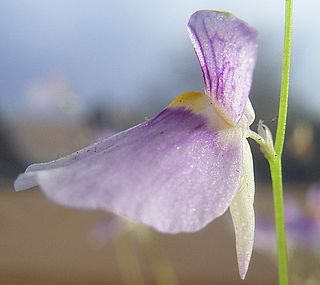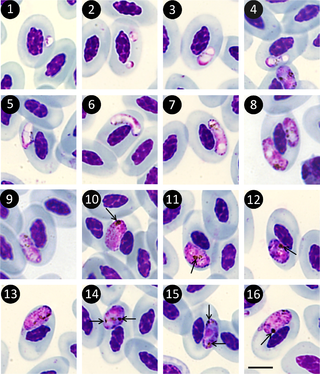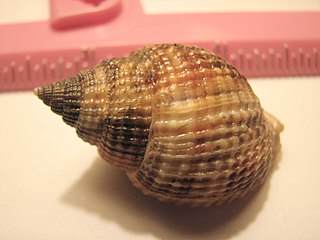
Equidae is the taxonomic family of horses and related animals, including the extant horses, asses, and zebras, and many other species known only from fossils. The family evolved around 50 million years ago from a small, multi-toed ungulate into larger, single-toed animals. All extant species are in the genus Equus, which originated in North America. Equidae belongs to the order Perissodactyla, which includes the extant tapirs and rhinoceros, and several extinct families.

Rhododendron is a very large genus of about 1,024 species of woody plants in the heath family (Ericaceae). They can be either evergreen or deciduous. Most species are native to eastern Asia and the Himalayan region, but smaller numbers occur elsewhere in Asia, and in North America, Europe and Australia.

In biology, a subgenus is a taxonomic rank directly below genus.

Leporidae is the family of rabbits and hares, containing over 70 species of extant mammals in all. The Latin word Leporidae means "those that resemble lepus" (hare). Together with the pikas, the Leporidae constitute the mammalian order Lagomorpha. Leporidae differ from pikas in that they have short, furry tails and elongated ears and hind legs.

In zoological nomenclature, a type species is the species name with which the name of a genus or subgenus is considered to be permanently taxonomically associated, i.e., the species that contains the biological type specimen. A similar concept is used for suprageneric groups and called a type genus.

The Plasmodiidae are a family of apicomplexan parasites, including the type genus Plasmodium, which is responsible for malaria. This family was erected in 1903 by Mesnil and is one of the four families in the order Haemospororida.

Cortinarius is a globally distributed genus of mushrooms in the family Cortinariaceae. It is suspected to be the largest genus of agarics, containing over 2,000 widespread species. A common feature among all species in the genus Cortinarius is that young specimens have a cortina (veil) between the cap and the stem, hence the name, meaning curtained. Most of the fibres of the cortina are ephemeral and will leave no trace once gone, except for limited remnants on the stem or cap edge in some species. All have a rusty brown spore print. The common names cortinar and webcap refer to members of the genus. Due to dangerous toxicity of several species and the fact that it is difficult to distinguish between various species of the genus, non-expert consumption of mushrooms from the genus is discouraged.

The Chamaemyiidae are a small family of acalyptrate flies with less than 200 species described worldwide. The larvae of these small flies are active and predatory and are often used for biological control of aphids, scale insects, and similar pests. Chamaemyiid fossils are poorly represented in amber deposits, but a few examples are known from the Eocene epoch onwards.

Allotinus is a genus of butterflies in the family Lycaenidae. The genus was erected by Cajetan Felder and Rudolf Felder in 1865. The members (species) of this genus are found in the Indomalayan realm.

Planorbis is a genus of air-breathing freshwater snails, aquatic pulmonate gastropod molluscs in the family Planorbidae, the ram's horn snails, or planorbids. All species in this genus have sinistral or left-coiling shells.

Neritidae, common name the nerites, is a taxonomic family of small to medium-sized saltwater and freshwater snails which have a gill and a distinctive operculum. The family Neritidae includes marine genera such as Nerita, marine and freshwater genera such as Neritina, and freshwater and brackish water genera such as Theodoxus.

Omorgus is a genus of beetles of the family Trogidae with about 140 species worldwide. Omorgus beetles are generally between 9 and 20 mm long.
Ephysteris is a genus of the twirler moth family (Gelechiidae). Among these, it is assigned to tribe Gnorimoschemini of the subfamily Gelechiinae. Even though it is a rather diverse and widespread group, most of these small and inconspicuous moths were overlooked by scientists until the early 20th century. Almost 90 species are known today but new ones are still being discovered.

Utricularia sect. Aranella is a section in the genus Utricularia. The ten species in this section are small terrestrial carnivorous plants native to tropical South America with one species also extending into tropical Africa. John Hendley Barnhart originally described and published this section in 1913 as a separate genus, Aranella. Sadashi Komiya revised the genus Utricularia in a 1973 taxonomic review and placed Barnhart's genus at the rank of subgenus within Utricularia. Peter Taylor then published his taxonomic monograph of Utricularia in 1986 in which he reduced Komiya's subgenus to the rank of section, placing it within subgenus Utricularia. More recent phylogenetic data and revisions have reinstated subgenus Bivalvaria and have placed this section within it.

Utricularia sect. Oligocista is the largest section in the genus Utricularia. The 42 species in this section are small to medium-sized terrestrial carnivorous plants native throughout the tropics, with six species in the Americas, ten in Africa, five in Australia, and the remainder in Asia, with 17 mostly native to peninsular India. Alphonse Pyrame de Candolle originally described and published this section in 1844. Peter Taylor published his taxonomic monograph of Utricularia in 1986, in which he placed this section within subgenus Utricularia. More recent phylogenetic data and revisions have reinstated subgenus Bivalvaria and have placed this section within it.
Utricularia sect. Phyllaria is a section in the genus Utricularia. The sixteen species in this section are small or very small lithophytic or epiphytic carnivorous plants native to the mountains of Asia, ranging from India to China and New Guinea. One species, Utricularia striatula, is an exception and is widespread in much of the Old World tropics. Wilhelm Sulpiz Kurz originally described and published this section as Utricularia subg. Phyllaria in 1874. Franciszek Kamieński reviewed the genus in 1891 and reduced Kunz's subgenus to a section. Later botanists, including Peter Taylor, agreed with Kamieński's assessment. In Taylor's 1986 revision of the genus, he placed this section in subgenus Utricularia. Later molecular data resulted in the revision of Taylor's treatment, reinstating subgenus Bivalvaria and placing this section within it.

Chrysolina is a large genus of leaf beetles in the subfamily Chrysomelinae. Most species are distributed in Europe, Asia and Africa with a small number of species inhabiting North America and introduced species in Australia.

The Haemosporida are an order of intraerythrocytic parasitic alveolates.

Cancellaria is a genus of medium-sized to large sea snails, marine gastropod mollusks in the family Cancellariidae, the nutmeg snails.
















